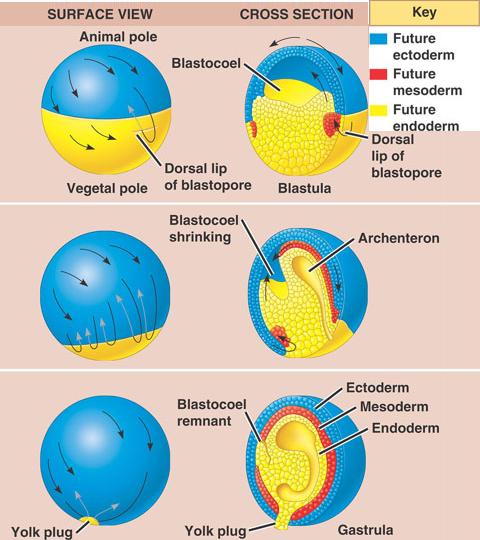
- Gastrulation begins when a small indented crease, the dorsal lip of the blastopore, appears on one
side of the blastula. The crease is formed by cells changing shape and pushing inward from the
surface (invagination). Additional cells then roll inward over the dorsal lip (involution) and move into
the interior, where they will form endoderm and mesoderm. Meanwhile, cells of the animal pole, the
future ectoderm, change shape and begin spreading over the outer surface.
- The blastopore lip grows on both sides of the embryo, as more cells invaginate. When the sides
of the lip meet, the blastopore forms a circle that becomes smaller as ectoderm spreads downward
over the surface. Internally, continued involution expands the endoderm and mesoderm, and the
archenteron begins to form; as a result, the blastocoel becomes smaller.
- Late in gastrulation, the endoderm-lined archenteron has completely replaced the blastocoel and the
three germ layers are in place. The circular blastopore surrounds a plug of yolk-filled cells.
Gastrulation in a frog embryo.
In the frog blastula, the blastocoel is displaced toward the animal pole and is surrounded by a wall several cells thick.
The cell movements that begin gastrulation occur on the dorsal side of the blastula, where the gray crescent was located in
the zygote.
Although still visible as gastrulation begins, the gray crescent is not shown here.
